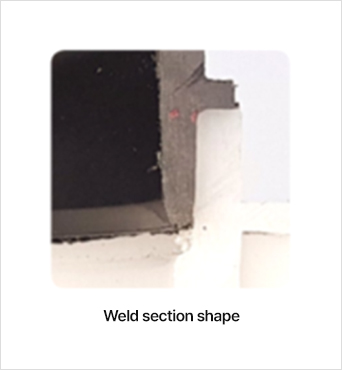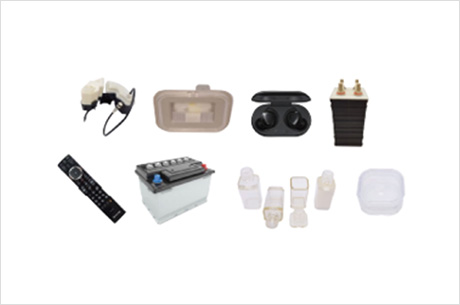Key Technology - Laser Plastics Welding
Laser Plastics Welding
Basic Principle of Plastic Welding Using Laser. An upper layer material parts is transparent for the laser wavelength, while the other absorbs the laser energy are arranged to overlap, and when the laser beam is irradiated from above, the upper layer is transmitted. The laser-beam reaches the interface of the lower layer and raises the surface temperature of the lower base material. It can be summarized that the heat generated in this process is transferred to the upper layer and the two base materials are melted and joined.
In general, as a typical method for bonding plastics, a method using an adhesive, a method using friction heat of ultrasonic waves and vibration, a method using a hot plate, and a method for fastening a screw have been used.
However, despite their advantages, there was a demand for an alternative method due to disadvantages such as appearance quality problems, leakages, particle and lint generation, increase production cost , parts design restrictions and work environment problems, and low productivity.
Plastic welding technology using laser has advantages compared to the conventional plastic bonding method mentioned above. It has the characteristic that there are few restrictions on the installation space.
With the support of experienced laser experts, technical factors are thoroughly reviewed and reflected from the part design stage, so trial and error can be minimized by minimizing injection deformation and securing stable mass production quality. The important parameters to consider in order to successfully apply the laser plastic welding technology to the mass production are as follows.
- Laser plastic welding significant parameters
- Wavelength and characteristics of laser beam
- laser power
- Optical Characteristics
- Transmittance of material
- Material thickness and color
- Transfer device, pressurization device and quality control device




Technical characteristics
- Non-contact, burr & particulate free
- Aesthetically appealing welds
- High work stability and flexibility
- 3D joints & radial welds
- Hold tight tolerances
- No damage to surrounding material and internal components
- Minimal thermal or mechanical part stress
Application field
- Automotive precision sensor partsAutomotive
- Actuator partsAutomotive Electronics
- PartsAutomotive Rear Combination Lamp
- Automotive Camera
Comparison and advantages of existing methods
Technology Classification |
Ultrasonic / Vibration | Hot-Plate | Glue | Laser |
|---|---|---|---|---|
| Quality(Strength.burr.Appearance Excellence) |  |
 |
 |
 |
| Task Flexibility(2D/3D various phenomena) |  |
 |
 |
 |
| Welding Power and Product Deformation(Uniform heat energy input) |  |
 |
 |
 |
| Maintenance and Management |  |
 |
 |
 |
| Work Environment(Safety Matters) | Noise, microscopic dust | High temperature, high heat | High temperature, Ultraviolet ray, Adhesives, Odors | A laser beam |
Laser Plastic Welding Key Parameters
- 01Wavelength and characteristics of laser beams
- 02Laser output
- 03Optical properties
- 04Transmittance and absorption of materials
- 05Material thickness and color
- 06Transport devices, pressurization devices and quality control devices








